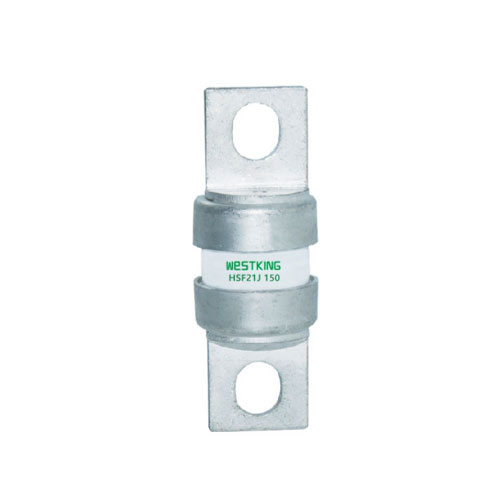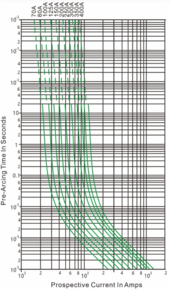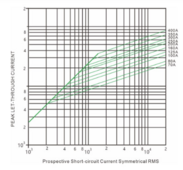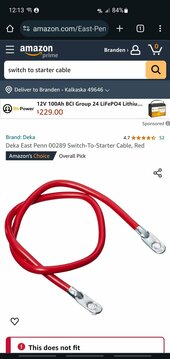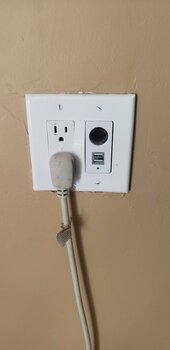Since I have everyone's attention let me ask you all your opinion on something.
Nylon lock nuts. Good or bad for this application?
Before this event I was thinking of putting lock washers on every connection to prevent anything from coming loose but now I think that's probably a bad idea.
Bad choice - nylock will loosen over time
Best choice is a serated flange nut - it will stay in place and not loosen off.

And, if you don't have a torque wrench or screwdriver you need to buy one and use it - 3 squeeks is not a good value
What crimper do you have? If it leaves big wings and is the AMZCNC brand that is because the dies are mismarked. They are metric marked in AWG most likely.
My goto crimper is the Temco
New for 2020, TH0005 Version 2.0. Released September 1st 2020, all units now include the following improved features: TRUE-HEX Crimp Forming dies apply uniform pressure on all sides for even compression and high pull out resistance. 16 Standard size dies for American Wire Gauge 10 through...

temcoindustrial.com
If you don't have a good crimper you can get cables made to length at

www.batterycablesusa.com
WindyNation is one of the nation's largest manufacturers of assembled battery cables in the USA. Cable lugs are attached to our highly flexible pure copper cable using a 6-ton pneumatic crimper with custom dies. After crimping, our heat shrink tubing is applied. Sold in 4/0, 2/0, 1/0, 2, 4, 6...
www.windynation.com
To answer your other question - Sorry - a Novel from here on out
House wire is typically THHN -
- Course stranded and not very bendable
- Sheath is typically vinyl
- Most times it is pure copper but aluminum is available
- Usually rated at 90c or less
Automotive wire -
- It is about twice as fine as THHN and more bendable
- Sheath is a mix of vinyl and other coatings to resist chemicals
- Good ones are made from copper strands that are tinned then combined into the wire
- Most are just copper strands
- Really cheap ones are CCA (copper clad aluminum)
- Usually 105 or higher because of where it is used.
Battery wire -
- Much finer than Automotive battery wire easy to bend
- Always pure copper
- In marine use each strand is tinned before combining into the final wire.
- Usually 105c but can be 90c up to several hundred degrees C
- Sheath - chemical resistant and varies with application
Welding wire -
- Super fine wire and very bendable, even tha large stuff
- Sheath is typically a rubberized coating that resists damage when you walk on it or drag it across and around a shop floor.
- Always pure copper
- Never tinned inside it
- Always rated at 105c or higher
PV wire -
- Fine stranded and super bendable
- Sheath is UV resistant
- Typically in 14 to 10 AWG
- Should be pure copper
There are MANY types of wire - for our purposes most people recommend welding wire because of the bendability and the higher temperature rating.
Higher temp rating allows for more current without overheating
All wire we use in the US will be rated at least 600v
For current carrying capacity all the matters is the cross-section area of the wire - 1 strand or 3000 strands and higher it all amounts to the same capacity when naked.
The sheath insulated and prevents arcing along with protecting the wire itself. It will have a temperature rating on it and many times other ratings for special use like under water, direct burial, etc.
Temperature ratings are in free air where the heat can bleed off while the air circulates. You put it in conduit, bury it, enclose it in a building, use it on a roof or attached to the side of a building where it is in the sun you have to de-rate it for the conditions.
The longer the distance the less current it can carry because of resistance in wire.
Conduit - in the US - to protect the wire and structure
- DC wires must be in metal conduit when in a dwelling, on a roof, attached to a dwelling.
- When outside and not attached to a building the conduit can be PVC.
- When pulling wires in conduit it MUST be all done at once - no adding another strand later without pulling the whole bundle and repulling it.
- You can't mix AC and DC wires in the same raceway or conduit - MUST be separated.
Common usage -
- Welding wire (also battery wire) - between the battery and the inverter or SCC (solar charge controller)
- THHN - between the inverter and the electrical panel and in the house, also between combiner box and SCC
- PV wire - between panes and SCC or combiner box.
Pretty much automotive wire is not used unless you can't get the other. Not that it can't be, just isn't common practice. If you use it you can't listen to their stated ampacity, instead you have to look at the temperature and AWG to get a current carrying capacity.



